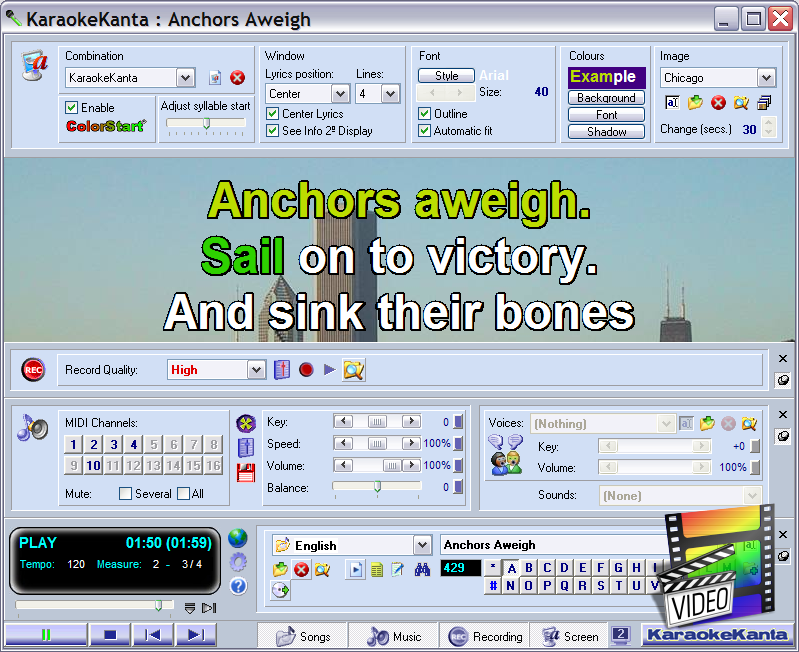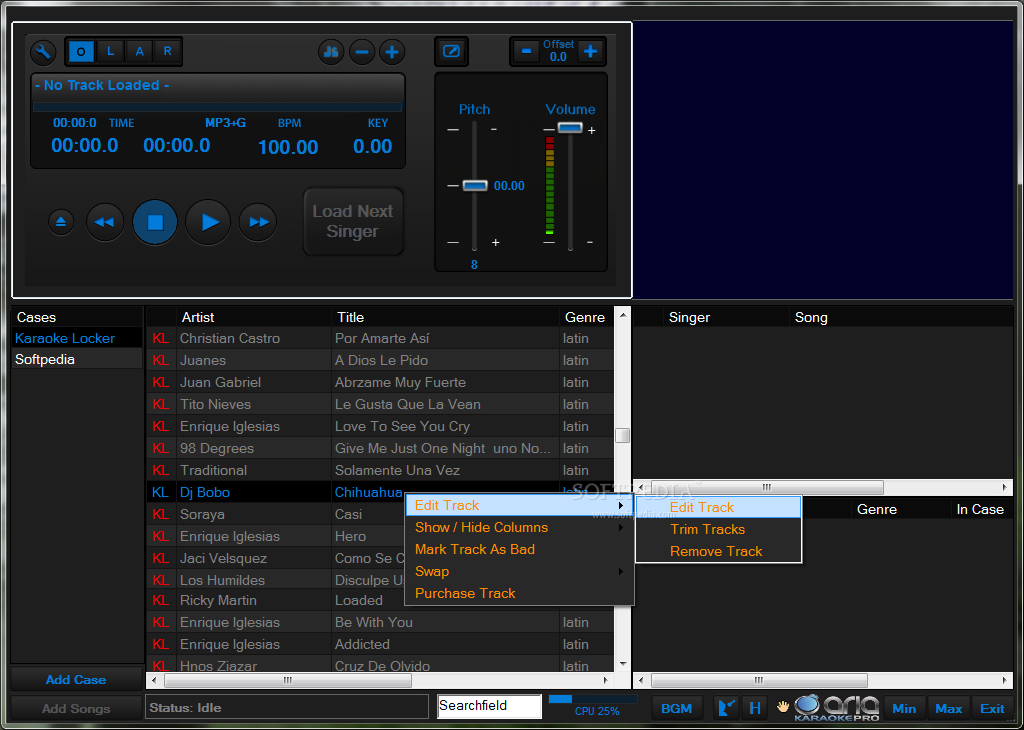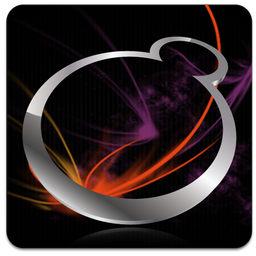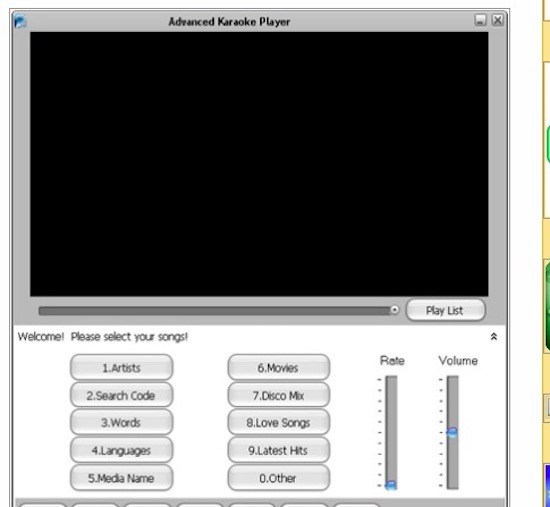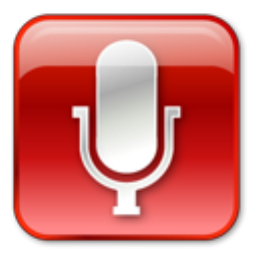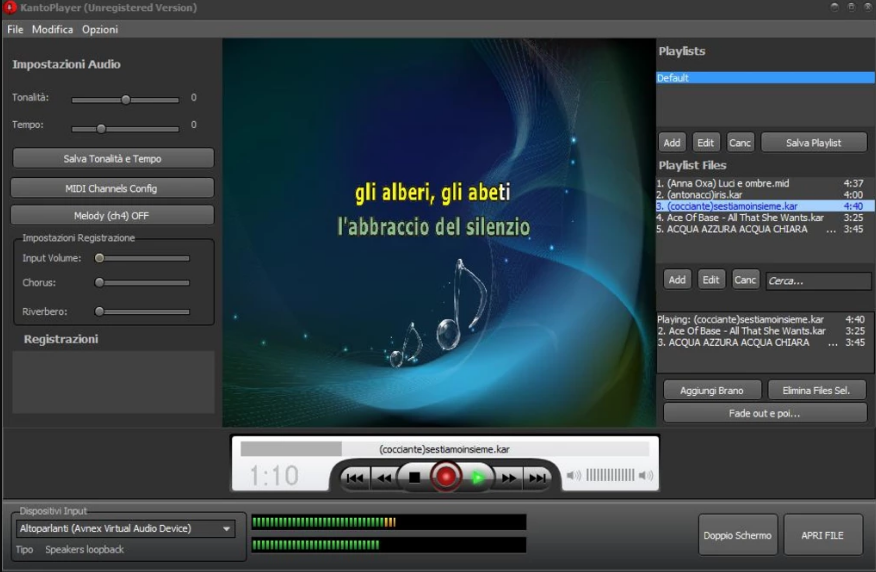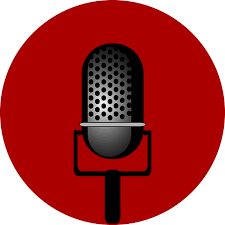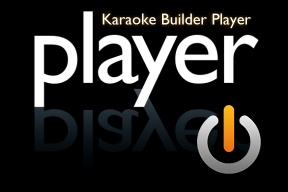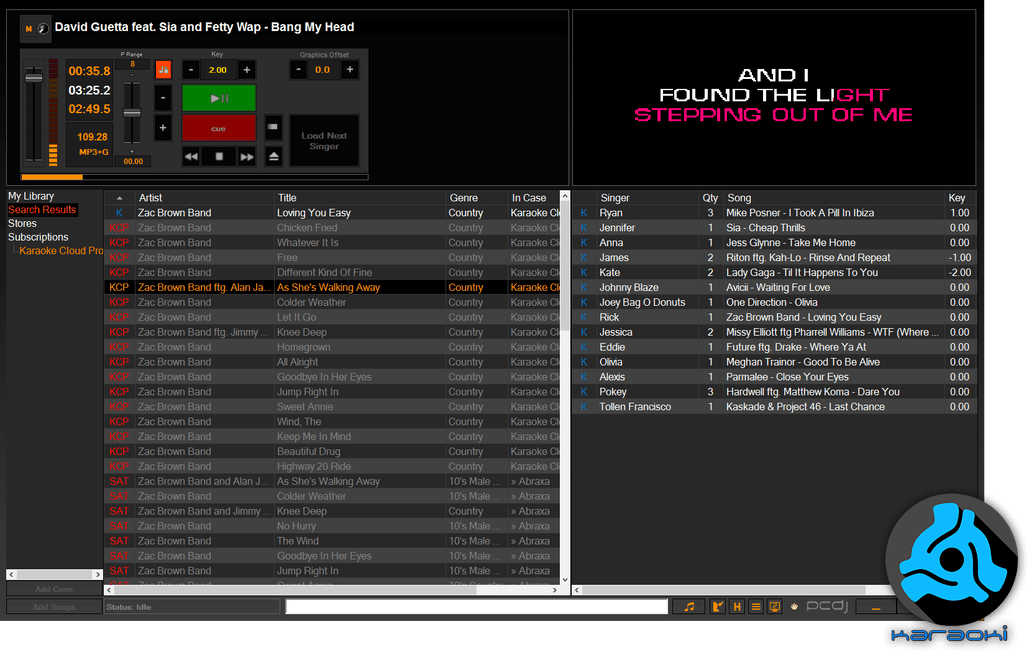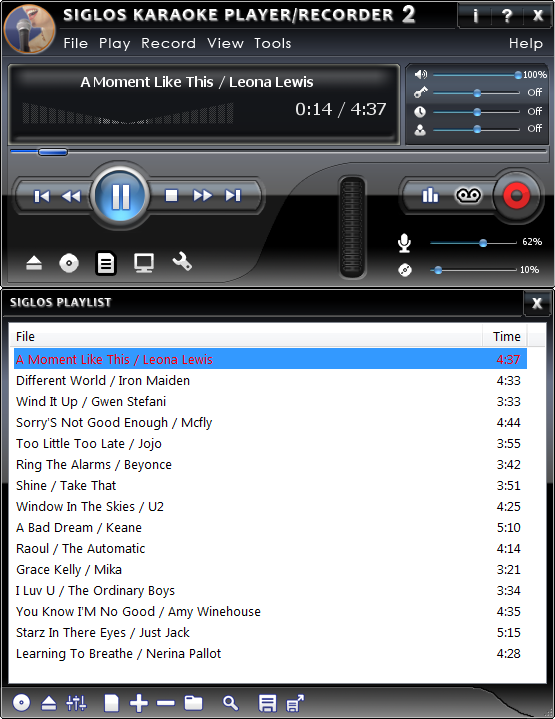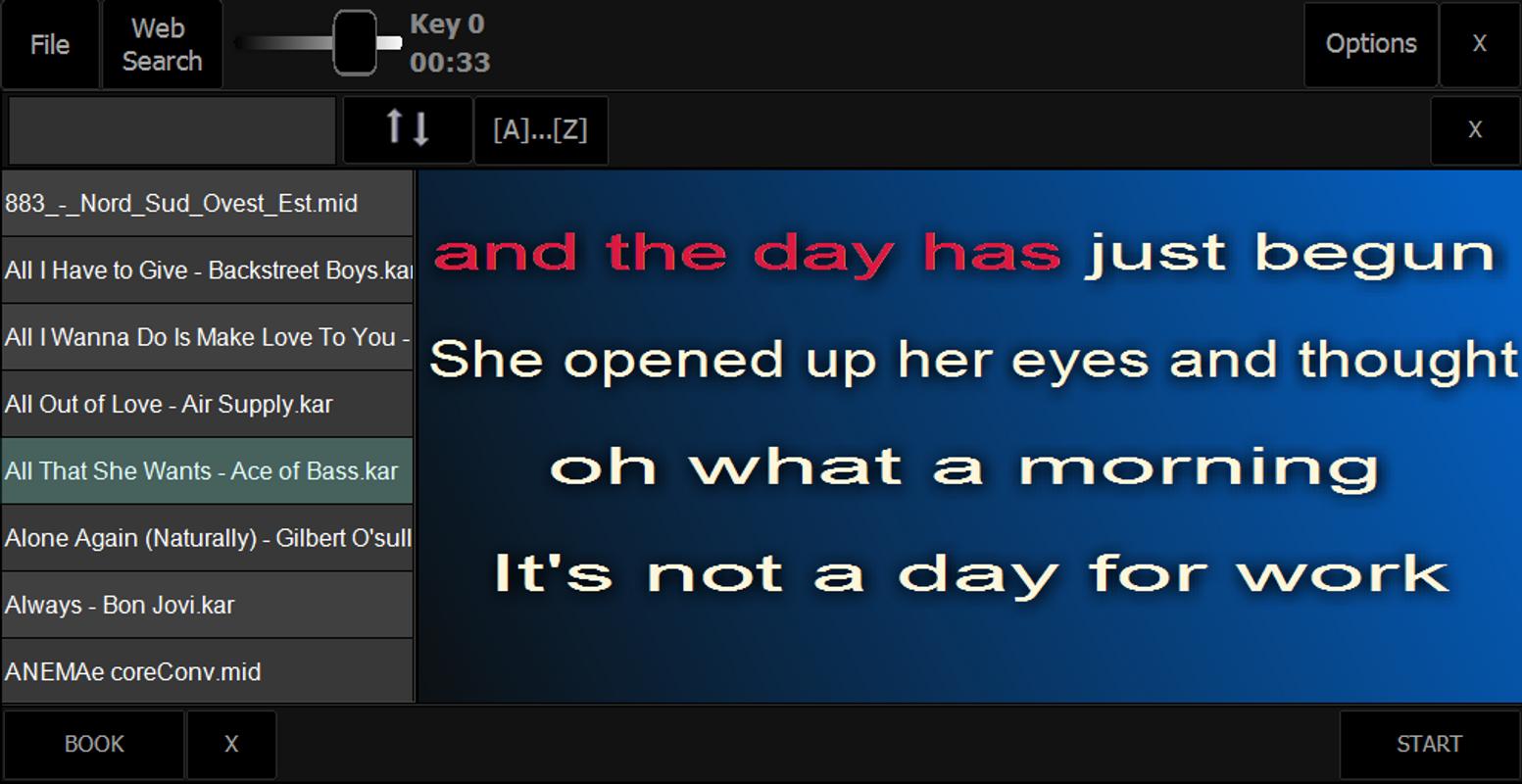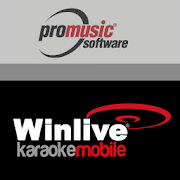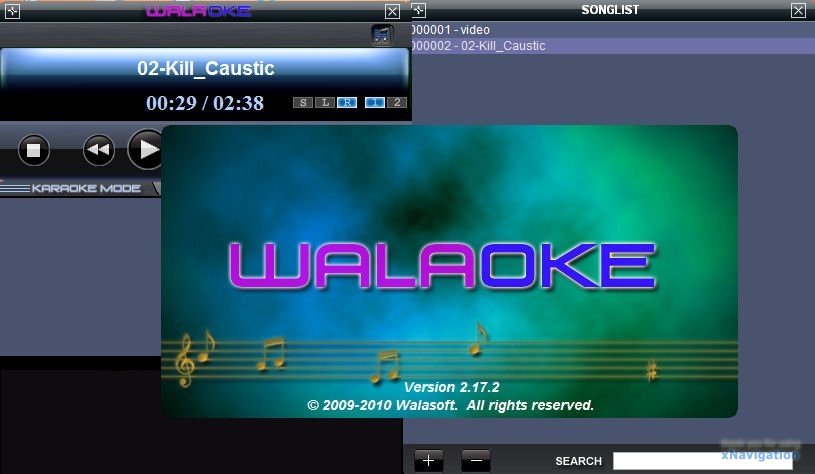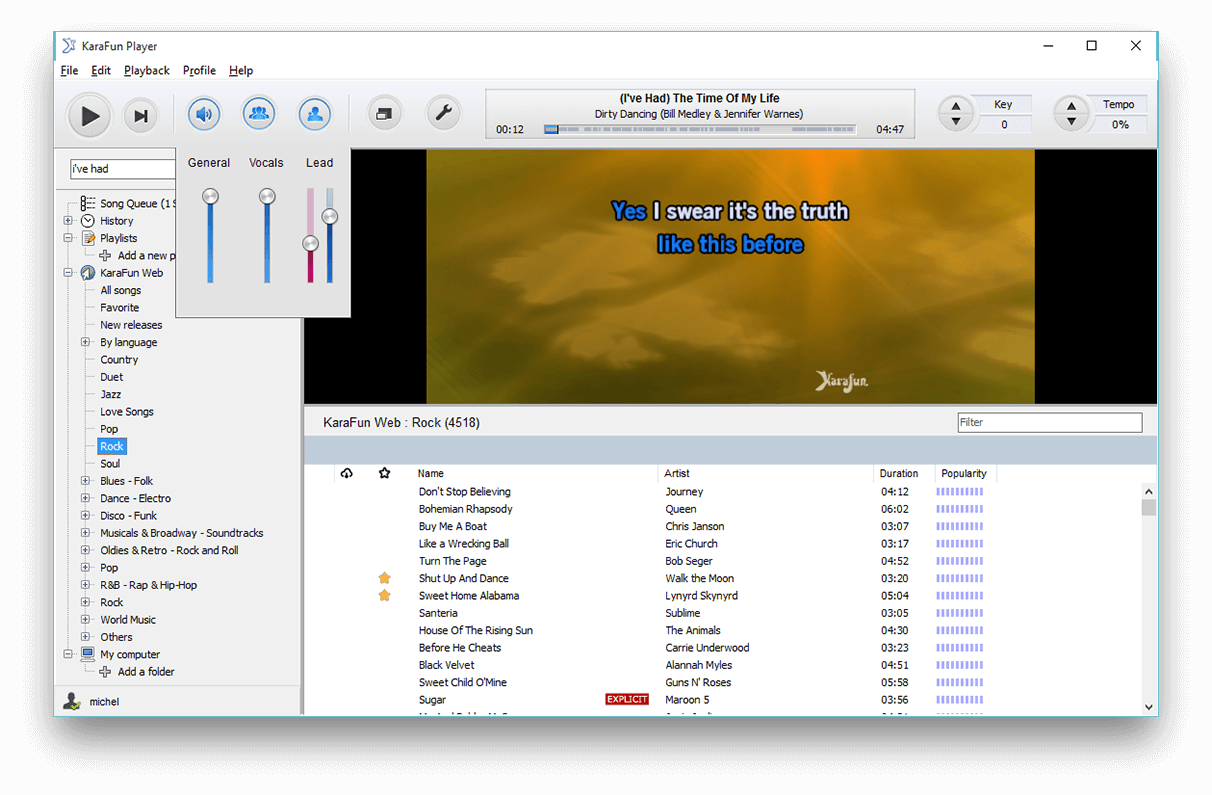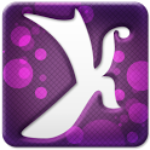Karaoke Kanta plays your regular audio files like MP3, WMA, CD+G, KOK, and LRC, being these last two lyrics files that few karaoke players support. It can also play KAR and MIDI files, you can also add effects during playback, a feature casual singers can have fun with when recording karaoke sessions. Video playback supports the most popular formats such as AVI, DIVX, MP4, FLV, MPEG, MOV, and WMV. All playable files can be sorted out by languages, singers, and genres. There’s also a TV screen feature which is just a monitor output so the lyrics can be seen on a different screen. You can also customize the lyrics look by setting a background image, changing their position and alignment. Karaoke Kanta uses its own Colorstart® Technology that displays the lyrics in a specific color to help you sync with the song and ultimately learn it. You can also extract the lyrics of any song as a web page for convenience. Karaoke Kanta is also available in 8 different languages. Along with its other features, it’s well worth the price, even if it’s not the most aesthetic player out there. The UI looks decent, you can customize the background image for the lyrics and mixing controls are there but you just wish you could play more than just midi files. Even if you have the latest version it doesn’t do what its supposed to. It has a catch though, the free version can’t play audio or video files, just MID and KAR files. The same goes for dual screen, sound effects and playlist creation features. The newest version can make up for all of that but it asks for a registration code that can’t be purchased. While it supports modern karaoke formats, it doesn’t give any love to legacy KAR or MIDI files. The song store is not functional so the locker feature is a no-go. It does have a background music player for those simple song that needs an extra kick. The possibility to print song lists is welcome for a better karaoke performance since some people don’t know the songs or can’t sing them without practice. The price tag on Aria Karaoke is steep for its feature list and the trial version of the software only lets you go a pair of parties. I’d be wary of the release date for those interested in buying, a software that old – and without a functioning website – may not be available now. It’s the third most downloaded karaoke player in the list so that means it’s popular. It’s simple enough if you’re looking to sing casually. One of the high points is the variety of formats it can play (CDG, VOB, DAT, MPG, AVI, MKV, MP4, WMV, ASF, MKV, RM, RMVB). As we’ve mentioned, it has all the basics such as dual screen support (and dual graphics), and volume presets so that the volume of every song is even and doesn’t have any problems with playback. One feature that mustn’t be overlooked is the remote control and touchscreen support, those make everything simple. Additionally, if you don’t have any of these, the keyboard shortcuts make your commands fast to access. The trial version only lets you play 50 songs and that’s it. If you’re looking for a simple player that solves a partying night, this is for you. But if you frequent casual karaoke singing it has a $40 standard price. The interface of the karaoke player is simplistic, to the point that you can have a hard time finding your way to playing a simple file. The Advanced Karaoke Player installs a standalone media manager to organize your songs into folders but it’s bothersome to open it because most programs don’t work like that. The software plays songs fine and even has support for old KAR files but the display didn’t work for us. It does have its multi-language support, with 12 languages to choose from. Kanto Player supports almost every known format (KFN, KAR, MID, MP3, MP3+CDG and CDG zipped files; video karaoke such as AVI, MPEG, and WMV). A welcome addition is the possibility to convert those old MIDI files to MP3’s. Also, the full version offers updates for a 3-year lapse. It’s one of the few karaoke players that includes crossfading between songs. Users can also do voice-overs for competition purposes or just for fun. As with most karaoke players, you can see lyrics in both your TV and PC. All of these features come with the purchased version of Kanta Player. The free version limits its playlists to five songs, one-minute recordings, MIDI to MP3 conversions to one minute and single screen display. This is one of those players that look simple but are part of a bigger bundle of software, it plays most karaoke formats including CD+G, MP3+G, Audio+G and Zip files. The support for CD+G includes color fading, scrolling and copying stills from the tracks. The playback features are what’d you expect from a regular karaoke player, users can change the key and pitch of the voice, they also can use the track slider for playback control and resize the lyrics window to one of six options (1x, 2x, 3x, 4x, 5x and fullscreen). They can also add one key shortcuts for quick access, too bad it doesn’t support any remote controls. The karaoke player is free to download but the company’s catch is that for better performance, you want the other programs of the pack. Playback is top-notch but you need CD+G or MP3+G files to get your karaoke fun going. PCDJ Karaoki’s price is the highest among the list, and frankly, it doesn’t justify it. The full version has access to songbook databases for your mobile devices (online) and KaraoQuest offers an offline mode integration with Karaoki but apart from that, it’s basically your standard karaoke player. You can scan every supported file such as MP3+G, Zipped MP3+G , WAV+G, and most video formats, the software works in addition to Karaoki Cloud Pro, a place that registers which songs have you bought, giving you access to them. The interface isn’t dazzling, in fact, it looks a lot like Aria Karaoke, the difference is that its store does work and the software is up to date. Like Karaoke Builder Player, it offers a bundle of programs that complement the karaoke player and even song purchases in their official website. Among other features, these include printing your songbooks, playing filler music (background), an offset for graphics and audio, configurable menu colors, the capability to be use a touch screen terminal through a wireless or wired network, importing M3U playlists, showing the next five singers in the rotation and deleting a singer from rotation 20 seconds after the song starts and a coach control for the singers. Siglos Karaoke Player allows you to use CD+G, MP3+G, MIDI files with ease, it also offers the possibility to play songs directly from Youtube. You can use one or two monitors (one for singing, the other one for management). Additionally, it animates the lyrics background so that it reacts to the song’s beat. The software takes into account the singers presence since it can use a camera as a live background for the lyrics and can record songs so they can be heard later. Other features are more standard like adjusting the key and song speed. This karaoke player is one to take into account, it has a fair price, it works well and it suits more than the basic needs of a standard KJ. The Youtube feature may be the best of all since you can find almost any song there, so you don’t have to spend extra money on buying tunes. It’s simple but not simplistic, its design is something anyone can catch on and it can be purchased through various ways of payment. Here’s a karaoke player you can get for free but it limits itself purposely so people that want a bit more run to pay the roughly $60 it costs. If we’re talking about the free version, this one can manage audio files as well as MIDI and every video karaoke format there is. It’s basic functionalities cover the basics such as playlists (limited to 11 tracks), database management, changing the size of the screen and shortcut keys, that’s about it. The home version can play Youtube video and supports both TXT and PDF files for importing lyrics. It expands the playlist capacity to 39 songs, users can replace parts of the MIDI file with one of 200 rhythms the software offers. It also has a metrodrummer so singers can catch the beat of any particular song. Accessibility features include tablet support, crossfading between songs, using midi and audio files at the same time (called M-live songs), you can also set an image for each song so it can be identified with an artist or a single. The only thing missing from Winlive is being able to purchase songs online, I guess the fact you can play Youtube or import the lyrics directly from text files make up for it. What separates Winlive from the rest is being able to use audio files in many ways so that it enriches the karaoke experience. It’s directed towards KJ’s that want a classic karaoke player to play songs and sing, without trying to make it more fun than it should be. The purchased versions offer more specialized features but if you just want to enjoy your karaoke right then and there, the free edition is for you. Walaoke is that strange case of the karaoke player that can do it all for free. It plays AVI, MKV, DAT, VOB, MPG, FLV, WMV and any other format whilst you have the proper codecs installed. Audio playback covers MP3+CDG, MP3+LRC, and MP3+XMLfiles, it also supports legacy MIDI and KAR files so it doesn’t leave anybody out of the party. The player can also customize your lyrics background with a camera or any video input. The lyrics can be displayed with different colors depending on if you’re a male, female or even singing in duet. Aside from that, it has your standard playlist management, can highlight the lyrics to add more effects to them and can save the default audio track or channel for later use. All these features come free with the player, no wonder it’s the most downloaded karaoke player on our list. You’d probably have to find the tracks yourself but if you’re short on budget and need legit karaoke software fast, this is for you. Not complicated, it does what you ask from it at no price at all, that’s Walaoke. Karafun Player is the second most downloaded karaoke player on the list and it shows once you open it. Its editor allows you to import all of your existing songs, it also supports legacy files (MIDI and KAR) and introduces the KFN format, which is exclusive to the software. One of the best features Karafun has to offer is its karaoke catalog. After you pay for any of the plans they offer, you can get access to more than 30,000 tunes. It also keeps track of the played songs with the history tool. Users can also save their favorite tunes and get them to your local storage. The player is free but if getting the songs you like becomes troublesome, you’ll likely pay for one of the subscription fees. After all, it’s less than what most karaoke software cost. It’s minimalist, sleek and lightweight. One of the best looking players out there with a good performance on even slower PC’s. So, there you have it, now you can choose given a variety of options and get on with karaoking until the sun comes down. As a complementary note, here’s a comparative chart with every karaoke software we’ve mentioned and its features. WAV WMV WAV MID WMV MID WMV MID WMV MID KOK WMV WAV ZIPG WMV WAV ZIPG WMV WMV WMA MID WMV
5 Best Address Book Software for Windows 105 Best Audio Recording Software for Windows 10Best Webcam Software for Windows 10The 5 Best Photo Organizing Software for Windows 10
